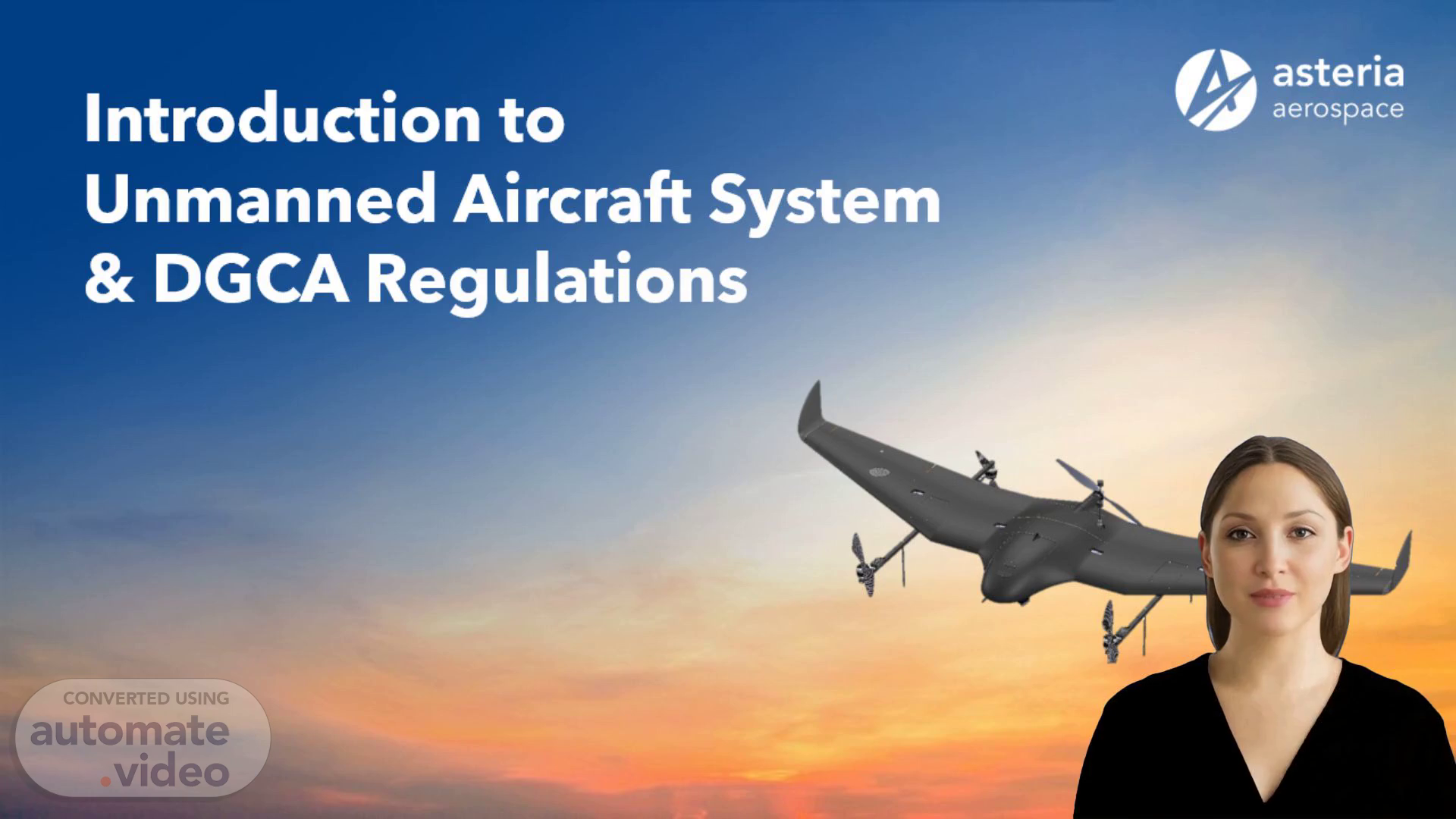
Page 1 (0s)
[Virtual Presenter] Good morning everyone. Today we will be discussing Unmanned Aircraft Systems and the D-G-C-A regulations that govern their use. We will look at the Flying Zones and Airspace Maps as well as the Digital Sky Platform. We will explore the safety and efficiency of these aircrafts and their use in the modern world..
Page 2 (20s)
[Audio] U-A-V-s have been in existence for more than a hundred years. These are unmanned aircraft that can either be operated with a remote or flown autonomously by an onboard computer. Their applications range from reconnaissance and surveillance to cargo transportation and refueling. With an upsurge in the usage of U-A-V-s regulations imposed by the Directorate General of Civil Aviation (D-G-C-A-) are also undergoing constant revisions in order to ensure public safety. Apart from U-A-V-s there are Unmanned Ground Vehicles (UGVs) and Unmanned Aquatic Vehicles (UAVs) that are employed for military tasks such as scouting as well as for civilian activities such as research and servicing. In comparison drones another variety of U-A-V-s are frequently used for shooting footage for films and taking pictures. As the need for unmanned systems continues to grow the D-G-C-A is actively striving to create regulations that facilitate innovation while maintaining safety and security..
Page 3 (1m 27s)
[Audio] Unmanned Aircraft Systems (U-A-S--) and Remotely Piloted Aircraft Systems (R-P-A-S-) have become increasingly prominent methods of aviation. Propelling these are Unmanned Aerial Vehicles (UAVs) and Remotely Piloted Aircrafts (RPAs). Their effectiveness and safety is due to the Ground Control System that supervises them making it possible to fly with unparalleled security and dependability..
Page 4 (1m 57s)
[Audio] U-A-S also known as Unmanned Aircraft Systems are gaining recognition for a variety of purposes from asset examinations to defense and homeland security. U-A-S are a cost-effective and efficient way to acquire aerial data and require less time and manpower compared to conventional techniques. Thanks to progressing technology U-A-S provide higher resolution and more exact measurements than before. The Indian DGCA Directorate General of Civil Aviation implements a collection of rules and regulations overseeing U-A-S operation in Indian space assuring the protection of all air traffic..
Page 5 (2m 40s)
[Audio] The Directorate General of Civil Aviation has implemented rules and regulations for the operation of unmanned aircrafts in India which encompass aspects such as Notified airspaces and operating time frames. This presentation gives a brief overview of the maps and zones associated with the DGCA's regulations..
Page 6 (3m 2s)
[Audio] Discussing unmanned aircraft system regulations as defined by the Directorate General of Civil Aviation we will look at the different zones and the permissions required for operating in each. To operate in the Red Zone permission is needed from both the Central Government and Air Traffic Control. For operations in the inner portion of the yellow zone permission is needed from Air Traffic Control..
Page 7 (3m 28s)
[image]. Flying Zones & Airspace Maps. 7.
Page 8 (3m 34s)
[Audio] The Digital Sky Platform is a single window interface provided by the Government of India to facilitate communication between unmanned aircraft systems operators and the Directorate General of Civil Aviation. It offers a simple and safe method of registration of unmanned aircraft receiving a Unique Identification Number and getting all the essential authorizations from the relevant authorities. This platform is put in place by the Government of India to ensure a safe and responsible usage of U-A-S-s in India. For more information visit gov..
Page 9 (4m 12s)
[image] A road between houses and mountains Description automatically generated.